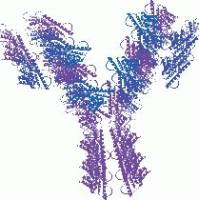Modeling Binge Eating in Nonhuman Primates
互联网
705
Human and nonhuman primates are opportunistic feeders and are prone to both obesity and binge eating when food is abundant. This chapter describes procedures for studying binge eating using a foraging model that engenders large meals in nonhuman primates. Baboons have access to food 24 h each day, but they have to complete a two-phase operant procedure in order to obtain it. Responding on one lever during a 30-min “seeking” phase is required before they can start a “taking” phase, where responding on another lever will lead to food delivery, i.e., a meal. Three days per week, baboons received candy during the first meal, and then food pellet meals were available the remainder of the day. Initially we compared a chocolate sugar-coated candy (M&M’s� ) to a jelly sugar-coated candy (Skittles� ). All baboons ate as much candy in the single candy meal as they did food pellets throughout the remainder of the day. Five baboons developed an aberrant behavior when they had access to M&M’s� in that they began to suck the candy coating off and throw away the chocolate center. This behavior rarely occurred with Skittles� , and it never occurred with food pellets.
This procedure can also be used to determine the effects of pharmacological agents on binge eating. For example, we examined the effects of the serotonergic drug dexfenfluramine and the dopaminergic drug d -amphetamine on food and candy consumption by determining complete dose–response functions for each drug when given on days prior to when Skittles� were available for the first meal and on days when only food pellets were available. The two drugs had different behavioral profiles of action. Both drugs decreased candy and food pellet consumption, but had varying effects on the latency to the first meal. Amphetamine increased the latency to the first candy and food meal, while dexfenfluramine only increased the latency to the food pellet meal. Thus, periodic access to a highly palatable candy food engendered large amounts of candy consumption in a single meal by all baboons, providing a behavioral baseline for assessing the effects of manipulations on binge eating, as well as regular food consumption, in the same animals.





